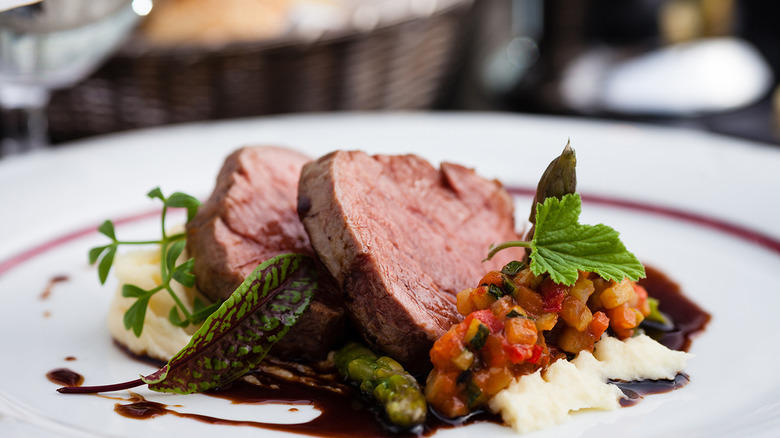Is Veal OK To Eat?
The 1980s poster child for animal cruelty is making a humane comeback
Veal is a delicacy enjoyed since biblical times and greatly prized in the cuisines of many countries in Europe. Traditional dishes include blanquette de veau in France, Wiener schnitzel from Austria and saltimbocca in Italy—but Americans hardly eat much veal, about one-third pound per capita. The reason many people avoid eating veal? It was the 1980s poster child for animal cruelty. But now, new practices and attentive chefs are hoping to change that.
Veal comes from "fatted calves," produced primarily as a by-product of the dairy industry. For a dairy cow to produce milk, she has to calve. While female calves grow to join the dairy farm, the males present a problem with just one obvious solution: veal. As Lori Dunn, executive director of Strauss Brands, one of the largest veal producers in the U.S., puts it, "If you have a pat of butter, you are contributing to the existence of veal calves."
Fortunately, gone are the days of baby animals tethered in crates so small they can't move, a style of raising calves outlawed in 10 states. In fact, in 2007 the American Veal Association (AVA), a member-driven organization that represents businesses and individuals engaged in the veal industry, made a commitment to eliminate all tethered pens by the end of 2017. In the U.S., practically all veal calves are now raised either in larger group pens where they can move freely inside a barn (referred to as milk fed) or outdoors on pasture.
While most of the veal in the U.S. is milk fed and produced in the Midwestern dairy states, Strauss is also a pioneer in producing "pasture-raised veal," a designation the USDA recognized in 2008. Today, 25 percent of the veal raised by Strauss family farmers is pasture raised and sold primarily at Whole Foods. Meanwhile, at California-based Rossotti Ranch, 100 percent of the calves are pasture raised and sold at farmers' markets, wholesale and online to consumers.
Veal calves lead a much better life than those raised for beef. They are raised on small family-owned farms, most of which have fewer than 200 animals, according to the AVA. Unlike calves raised for beef, calves raised for veal are not castrated, their tails are not docked, nor are their horns removed. It's illegal to use growth hormones on them, and antibiotics are used only if an animal gets sick.
Veal is also better for the environment than beef, because calves need less water and grain, and create less manure and methane. Pasture-raised calves keep native grasses in check and naturally fertilize the land.
When it comes to the meat itself, veal is no longer pale and bland, features caused by iron deficiency. Calves are fed whey—another by-product of the dairy industry—that is fortified into milk formula (much like infant formula), as well as grain or grass to ensure proper nutrition. The result is healthier animals and more flavorful and richer meat that is pinker since it's richer in iron. It's healthier, too; it has less fat and cholesterol than beef, and is an even better source of nutrients like protein, riboflavin and B6.
Pasture-raised veal has much of the flavor of beef but is leaner and moister. Chefs in particular are enthusiastic about using it. Staffan Terje, chef and owner of Perbacco and Barbacco in San Francisco, butchers the whole veal calves he gets from Rossotti Ranch. Terje serves the loin and chop for plated dishes, roasts the breast for agnolotti, uses the hind leg muscles for vitello tonnato or tartare, simmers the shoulder for bollito misto, and braises the shanks osso bucco-style.
For James Beard Award-winning chef Adam Siegel of Lake Park Bistro in Milwaukee, it's all about the flavor of the pasture-raised veal he gets from Strauss, noting he's able to do more with it and serve it with richer sauces. While he serves classic veal chops, he also makes use of veal leg, tenderloin, liver, sweetbreads and the breast. He also notes that he's buying and selling more of it year over year.
Though typically more expensive than beef, veal is more tender, leaner and healthier. Cooking veal for the first time? Try ground veal in your favorite meatball recipe or cutlets in a classic recipe for veal piccata. And let's not forget about veal bones, which are crucial for making stock and demi-glace.
Amy Sherman is a San Francisco-based writer, recipe developer and cookbook author who never says no to a warm doughnut. Follow her culinary escapades on Instagram at @cookingwithamy.
